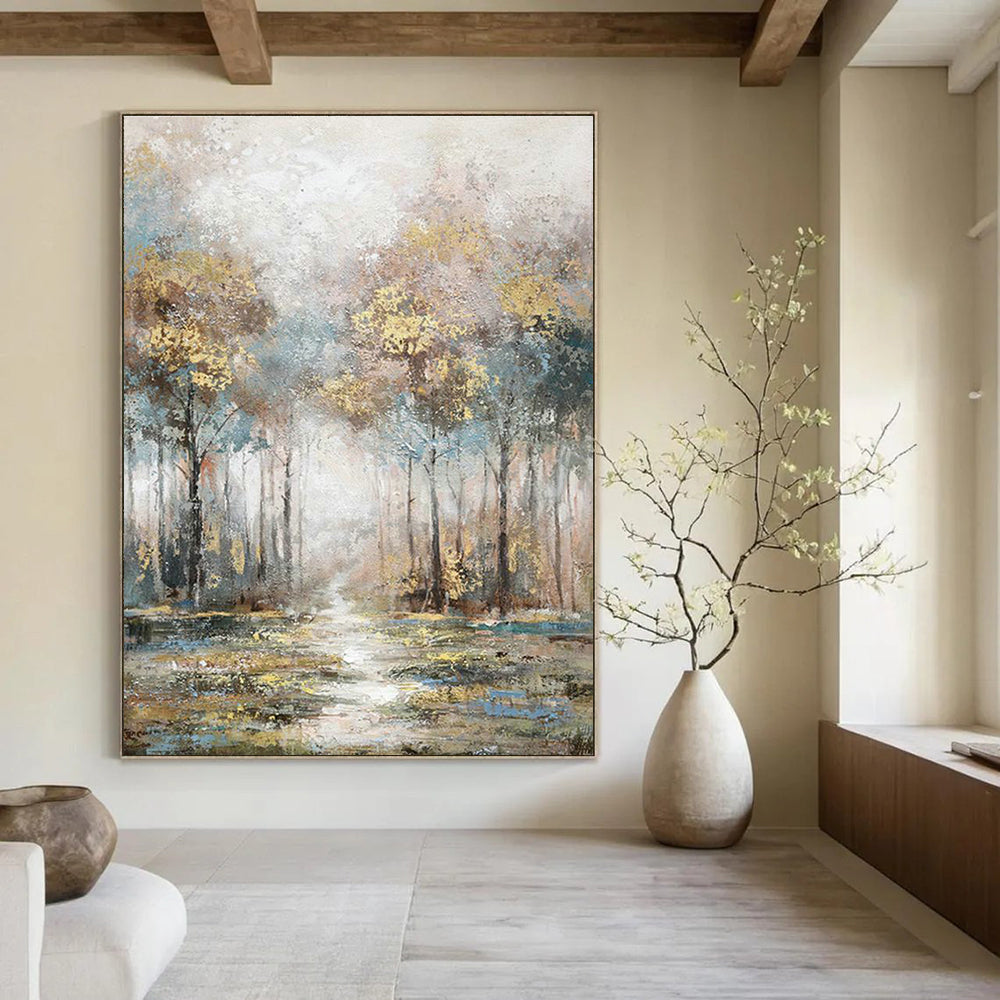
The Timeless Beauty of Landscape Paintings
Share
Landscape paintings have captivated art lovers and collectors for centuries, capturing the essence of nature’s beauty in varied forms and styles. From the gentle countryside scenes of the Renaissance to the emotive and dramatic vistas of the Romantic era, landscape art has evolved into a dynamic and essential genre within the visual arts. For those interested in exploring exquisite examples of this timeless art form, Landscape Paintings offer a gateway into a world where nature’s beauty and human creativity meet in perfect harmony.
Origins and Evolution of Landscape Paintings
Landscape art began as background scenery to religious and historical paintings but gradually emerged as a genre in its own right. Early works by Renaissance masters such as Leonardo da Vinci and Albrecht Dürer began featuring landscapes more prominently. Noteworthy is the "world landscape" style pioneered by Joachim Patinir, which combined expansive panoramic views with detailed, small-scale human activity.
By the 17th century, Flemish artist Pieter Bruegel the Elder elevated landscape as a subject with masterpieces such as Hunters in the Snow (1565) and Landscape with the Fall of Icarus (circa 1558), masterfully combining human narratives and nature’s intricate details. These works profoundly influenced the trajectory of landscape painting in Europe.

The Romantic Movement and Landscape Painting
The 19th century saw landscape painting achieve new heights of emotional and spiritual expression. British painters John Constable and J.M.W. Turner transformed the genre with their passionate depictions of the English countryside and wild seascapes, respectively. Constable’s The Hay Wain is celebrated for its realistic portrayal of rural life, while Turner’s dramatic treatment of light and atmosphere in works like The Fighting Temeraire laid the groundwork for Impressionism.
German Romantic painter Caspar David Friedrich added symbolic and spiritual depth to landscape art, with works such as The Cross in the Mountains (circa 1808) conveying a profound connection between nature and the divine.
Landscape Painting in Different Cultures
Eastern landscape art has a rich tradition as well, with Chinese Shan Shui painting – literally "mountain-water" painting – dating back to the 4th century CE. These artworks emphasize harmony between humans and nature, often depicting misty mountains and flowing rivers with traditional brush techniques. Influential modern Chinese painters such as Huang Junbi further advanced these styles with contemporary interpretations.
In North America, the Hudson River School artists, led by Thomas Cole, captured the grandeur and raw power of American wilderness, with Albert Bierstadt and Frederic Edwin Church creating large-scale, majestic views inspired by their European counterparts but distinctly American in spirit.
Contemporary Landscape Painting
Today’s landscape artists continue to explore the genre with innovative styles and media, blending realism, abstraction, and even digital techniques. The genre remains vital in art education, encouraging observation and appreciation of nature’s changing moods.
For collectors and enthusiasts, discovering works through well-curated collections like the Landscape Paintings collection offers a chance to connect with this rich artistic heritage.

Related Resources and Further Reading
-
Learn more about landscape painting history and styles at the Metropolitan Museum of Art
-
Explore significant landscape painting techniques and principles at the Getty Education
-
Discover the role of landscape art in Impressionism and Realism on Britannica
-
Read in-depth about Chinese landscape painting traditions at YouTube Art Channel on Chinese Landscape
-
Dive into the seasonal palettes and color mixing tips for landscape artists at KraftGeek
Frequently Asked Questions (FAQ)
What defines a landscape painting?
A landscape painting depicts natural scenery such as mountains, valleys, trees, rivers, and forests, often portraying a wide view with elements arranged in a composition that evokes a mood or theme.
Who are some famous landscape painters?
Key figures include Pieter Bruegel the Elder, John Constable, J.M.W. Turner, Caspar David Friedrich, Thomas Cole, and contemporary Asian painters like Huang Junbi.
How has landscape painting evolved over time?
It evolved from background art supporting other themes to a primary genre expressing cultural, spiritual, and emotional connections with nature, incorporating diverse techniques from realism to abstraction.
What are common themes in landscape paintings?
Themes often include the pastoral ideal, the sublime power of nature, seasonal changes, and the interplay between humans and the environment.
Can landscape paintings include human figures?
Yes, many landscape paintings include small human figures to provide scale, narrative, or interaction between people and nature.
